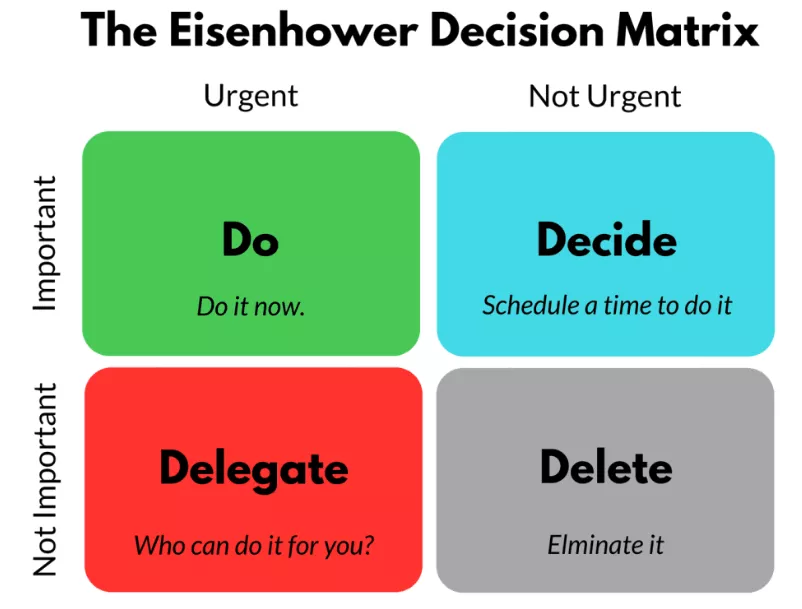
Family-friendly workplaces: How Pluxee (Sodexo) supports work-life balance
30 April 2025
Balancing work and life is like tuning into a personal symphony, where your job and passions create a harmonious melody. It is about consciously managing time and energy, ensuring a blend of work duties, personal commitments, and self-care. A recent survey highlights 79.9% emphasising the importance of a healthy work-life balance, reflecting evolving workforce needs and enhancing employee engagement.(1)
Achieving a healthy work-life balance involves carving out time for activities that rejuvenate you. Whether spending moments with loved ones, pursuing hobbies, or finding joy, the essence varies for each person. It is an ongoing conversation with oneself, navigating life's emotive responsibilities and deciding where to invest time and focus energy.
Key takeaways
- Prioritising work-life balance is essential in today's interconnected world, where the lines between professional and personal life often blur.
- Striking a balance involves conscientiously managing professional and personal commitments, emphasising self-care and overall well-being.
- The undeniable correlation between work-life balance and well-being results in reduced stress, prevention of burnout, heightened productivity, enhanced creativity, and increased employee retention.
- Achieving work-life equilibrium is a personalised journey, demanding continuous flexibility and the reassessment of priorities to ensure a healthy balance.
-
Practical strategies for maintaining this balance include proactive planning, effective time management, task prioritisation, setting clear boundaries, and nurturing personal interests.

Fostering work-life balance: Key advantages of family-friendly workplaces
Here are the key pointers outlining the benefits of family-friendly workplaces, highlighting the positive impact these environments have on employee well-being:
Striking the right balance for optimal output
Embracing a balanced work approach, punctuated by regular breaks, not only fosters a sense of refreshment but also yields heightened productivity. Numerous studies, including insights shared by Forbes, highlight that content employees exhibit up to a 20% increase in productivity compared to their less satisfied peers. Breaking free from constant stress not only rejuvenates individuals but also creates mental space for innovative ideas and provides clear and creative thinking.
Career advancement
Contrary to the misconception that overworking leads to career success, a well-balanced professional and personal life can contribute to long-term career advancement. Balanced individuals often demonstrate better decision-making and problem-solving skills.
Explore more: How employee motivation drives success
Enhanced physical health
A balanced work-life dynamic promotes better physical health. By managing stress levels and allowing time for self-care, individuals reduce the risk of stress-related health issues, contributing to an overall healthier lifestyle.
Improved mental health
Mental well-being is closely tied to work-life balance. A balanced approach helps prevent mental health issues such as anxiety and depression, fostering a positive mindset and resilience in the face of challenges.Did You Know?In a survey, a staggering 61% of employees revealed experiencing burnout, manifesting in symptoms like depression, anger, anxiety, physical aches, fatigue, and other mental health challenges. This alarming trend emphasises on the urgent need for prioritising workplace well-being and implementing strategies to address these prevalent issues.
Employee engagement
Employees with a balanced work-life dynamic are more engaged. They bring a positive attitude to their work, actively participate in team activities, and contribute to a collaborative and vibrant work environment. Recognising the significance of maintaining a proper work-life balance, 87% of HR leaders understand its role in reducing employee turnover.
Better relationships
Balancing work and personal life allows individuals to invest time in building and nurturing relationships. Quality time spent with family and friends strengthens social bonds and contributes to a fulfilling personal life.Increased job satisfactionIndividuals with a balanced work-life equation tend to experience higher job satisfaction. This stems from a sense of control over one's life, leading to a positive attitude towards work and career.
Lower risk of burnout
Overworking can lead to emotional exhaustion and a disconnection from one's job. Individuals with an improved work-life balance are less susceptible to experiencing burnout, as per a Gallup report. Balancing work and personal priorities mitigates the risk of burnout arising from work-related pressures, enabling individuals to navigate workplace stresses more successfully.
Related readings: Feel-good management: The new answer to workplace stress?
Positive company culture
Organisations that prioritise work-life balance foster a positive company culture. This culture, emphasising the well-being of employees, contributes to a more satisfied and motivated workforce.
Effective time management
Achieving work-life balance necessitates effective time management. Individuals become adept at prioritising tasks, setting realistic goals, and optimising their use of time, leading to increased efficiency.
|
Did you know? Research unequivocally demonstrates that flexible work arrangements play a pivotal role in fostering work-life harmony, leading to heightened satisfaction and effective functioning in the workplace. (2) |
Ways to implement a family-friendly workplace
Here are practical ways to implement a family-friendly workplace to cultivate a supportive and inclusive atmosphere for all team members.
Strategic planning
Integrate work seamlessly into your daily routine by strategically planning tasks. Blend work with leisure, social interactions, or fitness activities. Consider innovative approaches like virtual meetings during a walk or collaborative work with friends.
Effective time management
Utilise techniques like the Pomodoro timer for focused, short bursts of work to enhance efficiency. Break your workday into manageable chunks to prevent burnout. Create a conducive environment that minimises distractions, optimising your time.
Task prioritisation using the Eisenhower Matrix
Categorise tasks into urgent and important, important but not urgent, urgent but not important, and neither urgent nor important using the Eisenhower Matrix. Focus on tasks in the first quadrant to maximise productivity.

Establish clear boundaries
Set a definitive end time for your workday, even in a remote setup. Reinforce boundaries by shutting down work-related devices, locking your office, or scheduling post-work activities. Clearly communicate your availability, emphasising non-working hours.
Delegation for workload management
Delegate tasks to your team effectively to reduce your workload. Embrace a managerial approach that involves delegation and empowers subordinates in decision-making. This autonomy often leads to increased job satisfaction and improved task performance.
Mindfulness practices
Incorporate mindfulness meditation or deep breathing exercises into your daily routine. Cultivate self-awareness, reduce stress, and address emotional needs. Mindfulness allows you to recognise moments when personal well-being might be neglected in favour of work.
Structured time blocks
Designate specific time slots for tasks aligning with their nature, such as checking messages, attending meetings, or tackling mentally intensive work. Align these blocks with your peak productivity hours for optimal results.
Leveraging technology for unplugging
Use apps that block distracting websites during work hours and restrict work-related tools after hours. Consider maintaining a separate device for work or adopting a work-free device for complete disconnection during personal time.
|
Did you know? A remarkable 94% of employees acknowledge the significance of work-life balance in their professional journey. Interestingly, despite this awareness, only 78% of individuals believe they have achieved a satisfactory work-life balance. This intriguing gap between awareness and perceived attainment emphasises the ongoing challenge of harmonising professional and personal aspects of life in the modern workplace. |
Challenges and solutions in implementing family-friendly workplace policies
Acknowledging potential challenges
Challenge: Resistance and scepticism towards implementing family-friendly policies.
Solution: Proactively engage employees through open communication and awareness campaigns. Emphasise the positive impact on work-life balance and showcase real-life examples of success.
Overcoming stereotypes
Challenge: Stereotypes affecting the adoption of family-friendly practices, with concerns about reduced productivity.
Solution: Introduce merit-based performance evaluations to challenge stereotypes. Highlight success stories of individuals excelling while benefiting from family-friendly workplace policies, enabling a culture of inclusivity.
Balancing workloads
Challenge: Potential unequal distribution of workloads, impacting those utilising family-friendly workplace benefits.
Solution: Establish transparent workload management systems, ensuring fair distribution. Promote teamwork and cross-functional collaboration to address fluctuations in work demands, fostering a more supportive environment.
Managing remote work challenges
Challenge: Remote work may pose difficulties in maintaining family-friendly practices.
Solution: Utilise technology for flexible scheduling and remote collaboration tools. Clearly define expectations, set boundaries, and encourage regular check-ins to facilitate communication and support, ensuring a harmonious balance.
Suggested reading: Workplace incentives for the baby boom generation
Wrapping Up
The pursuit of work-life balance is a journey that requires conscious effort and strategic implementation of family-friendly policies. Recognising the importance of achieving equilibrium between professional responsibilities and personal well-being is significant. The implementation of family-friendly policies not only contributes to heightened employee engagement and productivity but also creates a positive company culture.
We understand that work-life harmony is not just a luxury but a necessity, acknowledged by the numerous benefits it provides to employees. Through our innovative solutions like the meal pass, multi-benefits pass, and other employee benefits, we prioritise the workforce's mental and physical well-being, fostering a culture of inclusivity and satisfaction.
Transform your workplace with top-tier employee benefits – Connect with us for a better tomorrow!
FAQs
1.How can a family-friendly workplace positively impact employee well-being?
Family-friendly workplaces reduce stress, prevent burnout, enhance physical and mental health, increase job satisfaction, and improve overall work-life balance. Collectively, these factors lead to a more satisfied and engaged workforce.
2.What are some practical strategies for maintaining work-life balance in a professional setting?
Practical strategies include proactive planning, effective time management, task prioritisation, setting clear boundaries, nurturing personal interests, and embracing flexibility. These approaches contribute to creating a harmonious balance between professional and personal life.
3.What challenges may arise in implementing family-friendly policies, and how can they be addressed?
Challenges may include resistance, stereotypes impacting productivity, unequal workload distribution, and difficulty managing remote work. Solutions involve:Proactive communicationMerit-based evaluationsTransparent workload managementLeveraging technology for flexible scheduling and remote collaboration
4.How do family-friendly workplaces contribute to a positive company culture?
Organisations prioritising family-friendly workplaces cultivate a positive company culture. These environments contribute to a more satisfied and motivated workforce by emphasising employee well-being. This positive culture, in turn, fosters increased engagement, collaboration, and overall workplace satisfaction.
5.In what ways can I improve my work-life balance proactively?
Improving work-life balance is an empowering journey. It involves proactive planning, effective time management, setting boundaries, and embracing personal interests. It is about reclaiming control over your life and infusing each day with professional and personal fulfillment.





